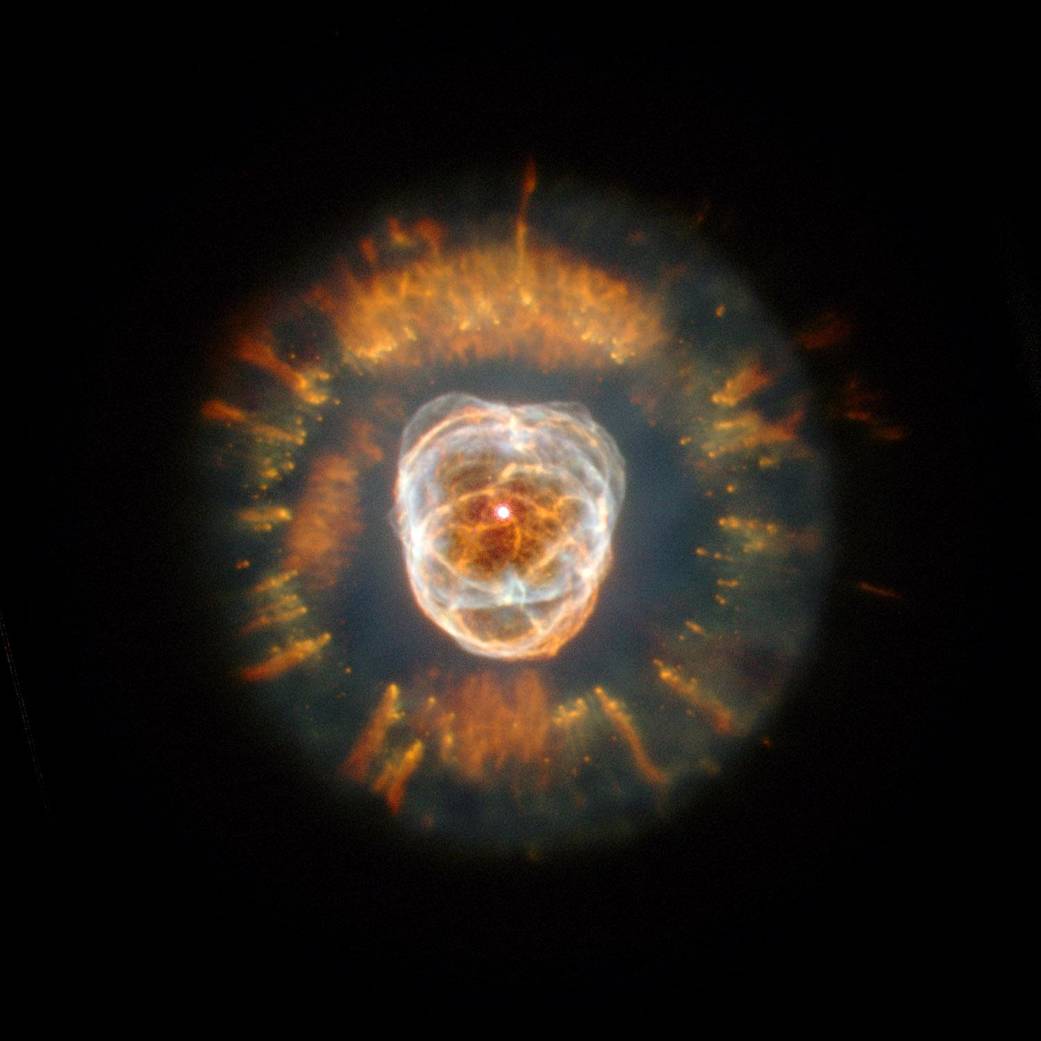
Editor’s Note: As of Aug. 1, 2020, NASA no longer refers to nebula NGC 2392 as the “Eskimo Nebula,” as it can be considered an insensitive and offensive term. More information.
This stellar relic, first spied by William Herschel in 1787, is nicknamed the Eskimo Nebula (NGC 2392) because, when viewed through ground-based telescopes, it resembles a face surrounded by a fur parka. In this Hubble telescope image, the ‘parka’ is really a disk of material embellished with a ring of comet-shaped objects, with their tails streaming away from the central, dying star. Although the Eskimo’s ‘face’ resembles a ball of twine, it is, in reality, a bubble of material being blown into space by the central star’s intense ‘wind’ of high-speed material. This object is an example of a planetary nebula, so named because many of them have a round appearance resembling that of a planet when viewed through a small telescope. A planetary nebula forms when dying sun-like stars eject their outer gaseous layers, which then become bright nebulae with amazing and confounding shapes. The Eskimo Nebula is about 5,000 light-years from Earth in the constellation Gemini and began forming about 10,000 years ago.
Image Credit: NASA


























